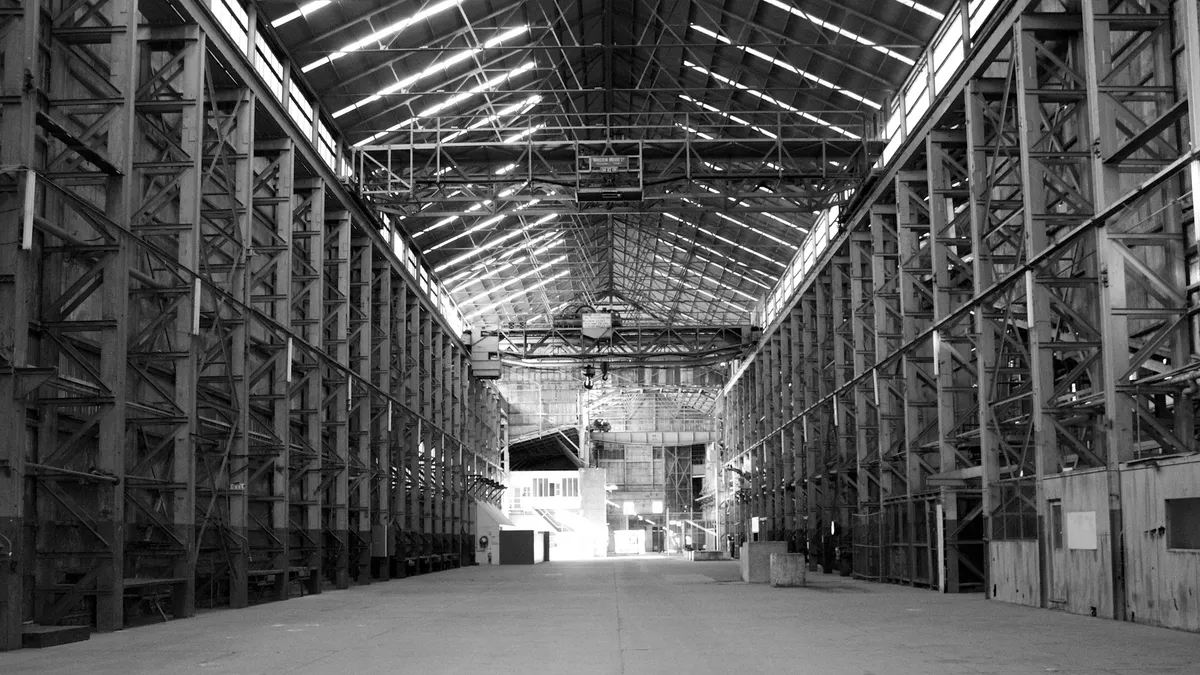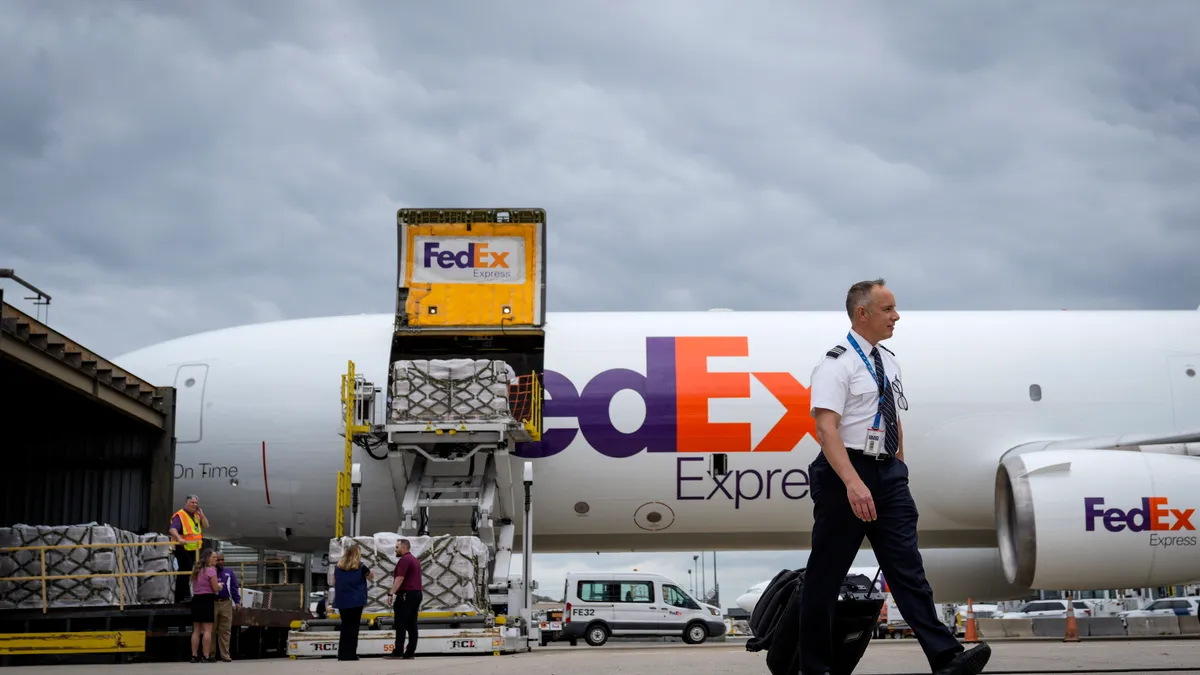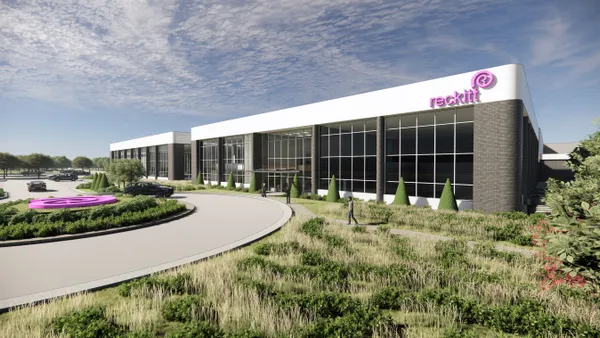Dive Brief:
- New warehouses keep appearing, but human staffing is slowing compared with that of robots, the Los Angeles Times reported last week.
- The numbers tell the story: a mere 2,800 more warehouse workers were hired this October, marking a 3% increase from the previous year. By contrast, the previous two years saw a 14% and 13% increase in warehouse employment, respectively, totaling 22,000 new hires.
- While in some cases robots and people work alongside each other, humans are primarily serving as technicians in many new factories, ensuring mechanized tasks are performed properly.
Dive Insight:
There's no denying that an increase in warehouse desirability has emerged around the nation, but whether it is actually destined to provide jobs remains in question.
The Los Angeles Times focuses on a Skechers shoes distribution plant in Moreno Valley, CA, which was originally touted as a source of significant employment but was largely staffed by robots upon completion. But as the city prepares to become a global logistics hub, citizens looking to keep companies accountable for job and sustainability promises are challenging new construction.
In fact, the issue of robot staffing is a Catch-22. To secure funding and investment, jobs must be promised. Yet the ability of robots to preform certain tasks with greater skill is undeniable. But as demand for skilled labor in regional hubs outpaces supply, more robots will inherit the jobs formerly employed by people and the pressures to find a balance ratio between robot and human staffing will rise.












